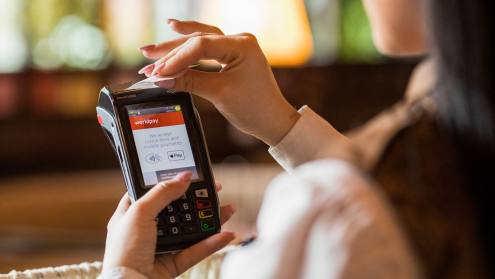The Covid-19 pandemic “turbocharged” digital payments and consumers’ expectations and behaviours, leading to an increase in appetite for digital payment methods, says Jamie Lee, head of partner management, Europe, the Middle East and Africa at digital payments infrastructure company PPRO. “While it’s clear that cards are still king for the time being, as popularity rises for faster payments and open banking, competitors for cards will continue to grow in all shapes and sizes.”
Mr Lee says it is clear that a diverse set of digital payment methods have become mainstream for the everyday consumer. Citing financial industry trade association UK Finance’s Payment Markets Summary, he notes that contactless payments are continuing to grow in popularity, as well as other methods such as buy now, pay later (BNPL).
Forecasts
In its report, UK Finance, observes that historically the payments market has been slow to evolve. The pandemic and its resulting lockdowns, however, led to significant changes in payments patterns in the UK. During 2020, the number of payments made fell significantly, although this number returned to pre-pandemic levels as the economy reopened.
During the pandemic, people made greater use of contactless payments as well as online banking and mobile wallets. UK Finance questions whether such trends are sustainable, noting that on the reopening of the economy “trends in payments behaviour have returned towards their pre-pandemic patterns”.
The report identifies three long-term payments trends:
- Continued increase in debit card payments;
- Continued decline in cash payments, albeit at a reducing rate over time;
- Ongoing growth in faster payments and other remote banking.
Forecasting the payments market to 2031, UK Finance expects debit card payment transaction volumes to increase by 24% to 24 billion per year, with contactless debit and credit card payment transaction volumes growing by nearly 50% to 19.4 billion. Faster payments and other remote banking payment methods will increase by close to 60% to 5.7 billion per year.
What consumers want
Mr Lee says consumers are increasingly prioritising speed and convenience. “Digital payment methods are more often than not centred on user experience and building tighter relationships between the merchant and the user. Financial institutions recognise this, as integrating digital payment methods is a very powerful tool for attracting, engaging and retaining consumers,” he says.
While cards remain the predominant form of payment, Ola Oyetayo, chief executive officer and co-founder of Verto, which operates a cross-border payments infrastructure, says their market position is “gradually being undercut by the growth of point-of-sale financing offerings that combine instalment lending with the convenience of card payments”. BNPL providers are changing consumers’ expectations of the payment experience and are a force to be reckoned with when it comes to tailored solutions for consumers, he adds.
Mr Lee believes the plastic card will “likely decline in popularity”, given that it is already largely redundant as solutions such as Apple Pay increase in popularity. “While the physical card may start to become less important, the card network and rails they run on will continue to be a very important factor in the payments landscape.”
The large card scheme operators have built up brand recognition and acceptance, cross-border and foreign exchange capabilities, and established processes that mean they “will be around for some time”, says Mr Lee.
Mr Oyetayo agrees, noting that the volume of card payments remains stable, with room to grow as cash payments decline. “It is not easy to dethrone card payments because of the existing infrastructure, consumer habits and their market dominance,” he says. “They are mounting a defence against new payment methods by developing competing payment methods in-house, or by acquiring or investing in them.”
Crypto payments
Mr Oyetayo explains that card giants such as Mastercard and Visa are increasingly investing in cryptocurrency use cases. “A great example of this is Mastercard’s partnership with Binance to launch a crypto card that allows consumers to pay with bitcoin and other digital currencies,” he adds.
The Binance Card, issued by Argentinian payments provider Credencial Payments, will allow all new and existing Binance users in Argentina with a valid national ID to make purchases and pay bills with cryptocurrencies, including bitcoin, at more than 90 million Mastercard merchants worldwide, both in-store and online.
For the emerging card scheme competitors to become mainstream, says Mr Oyetayo, they must consider the role of rewards for consumers. “Looking at QR code or mobile payment solutions, these methods have the potential to disrupt the market as providers could undermine card networks in interchange fees, provide rewards and encourage merchants to offer them as a payment method.”
“It is clear that rewards play a strong role in driving consumer behaviour, as well as having an impact on their payment choices, which could push these kinds of payment methods into the mainstream,” he adds.












